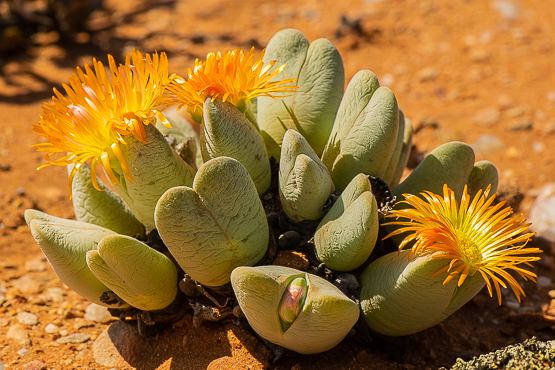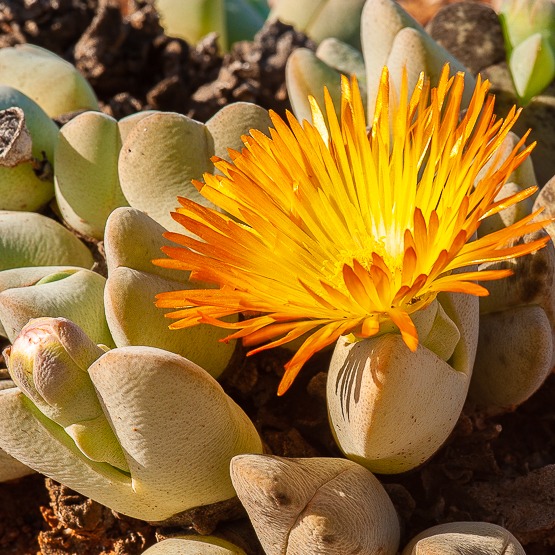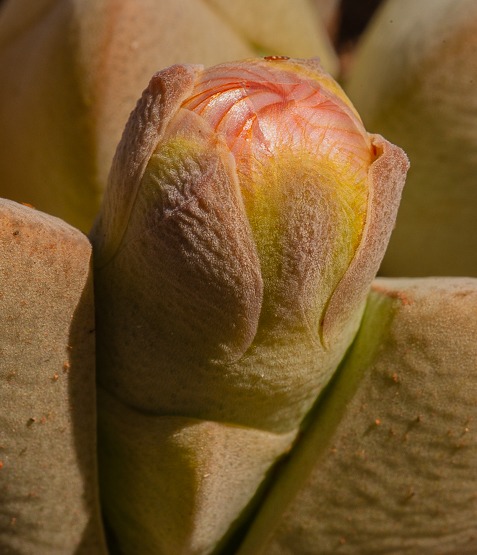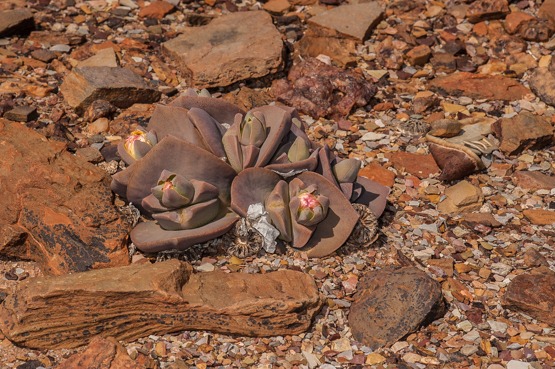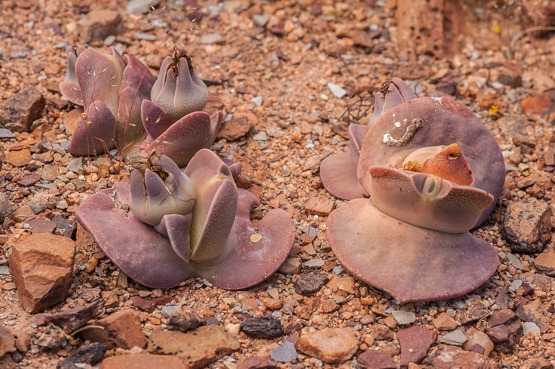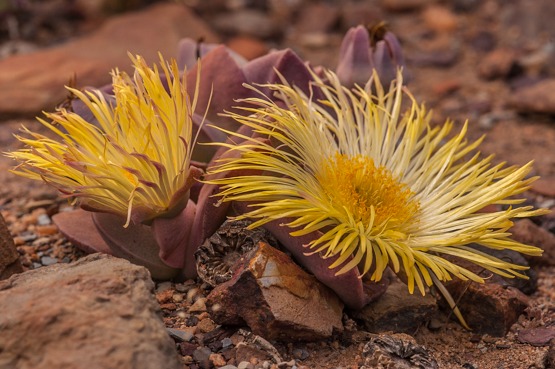This species is a common sight on soft saline soil and low outcrops in the Richtersveld, from north of Lekkersing to the Augrabiesberg, at an altitude of 200-300 m. This is a winter rainfall area, which receives less than 100 mm rain per year.
It develops large, dense clumps 6-10 cm tall and up to 50 cm in diameter.
The more or less erect leaves are pale greyish white to bluish green, broad and thick (1-2.5 cm) and up to 4.5 cm long.
The flowers are 5-6 cm in diameter and range from cream and yellow to orange-red, sometimes with a purplish tinge. They appear in winter and spring (August-September).

